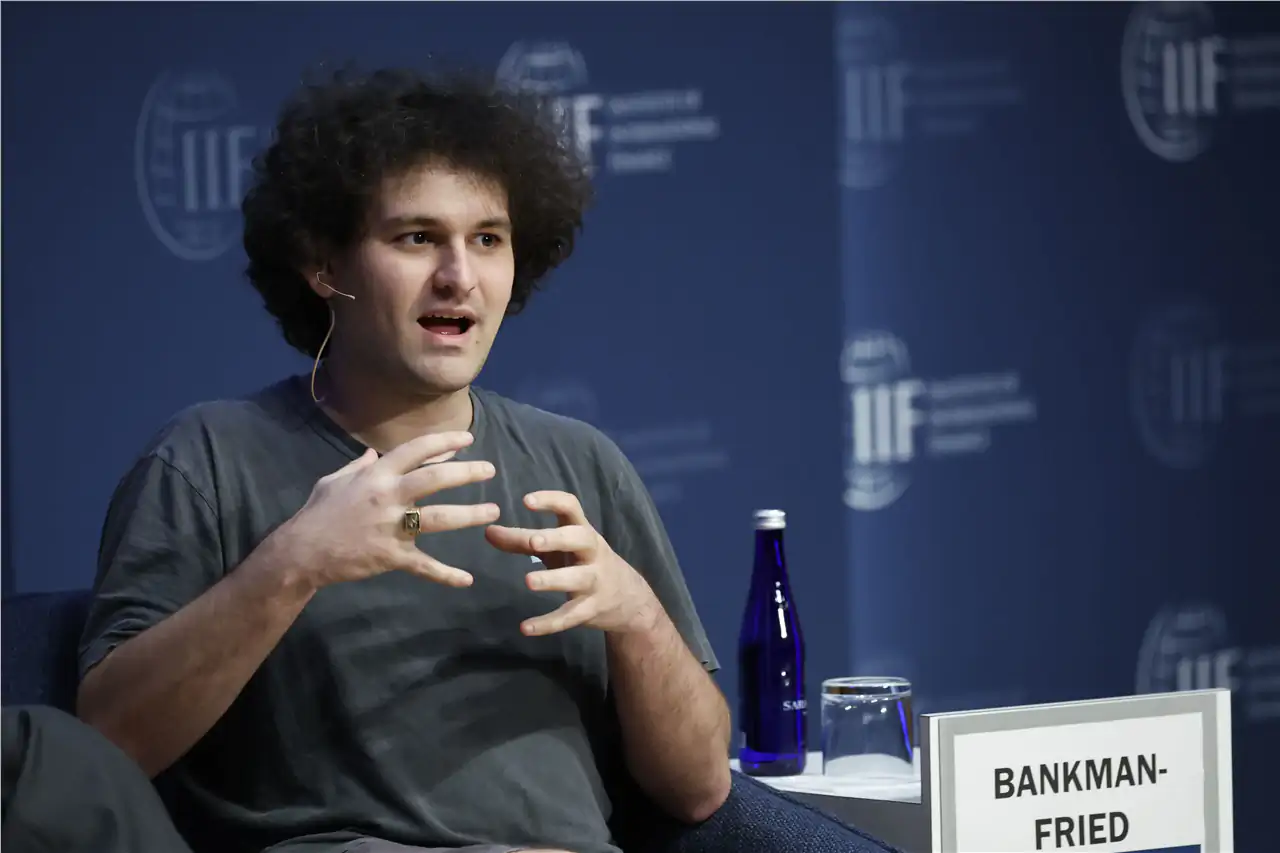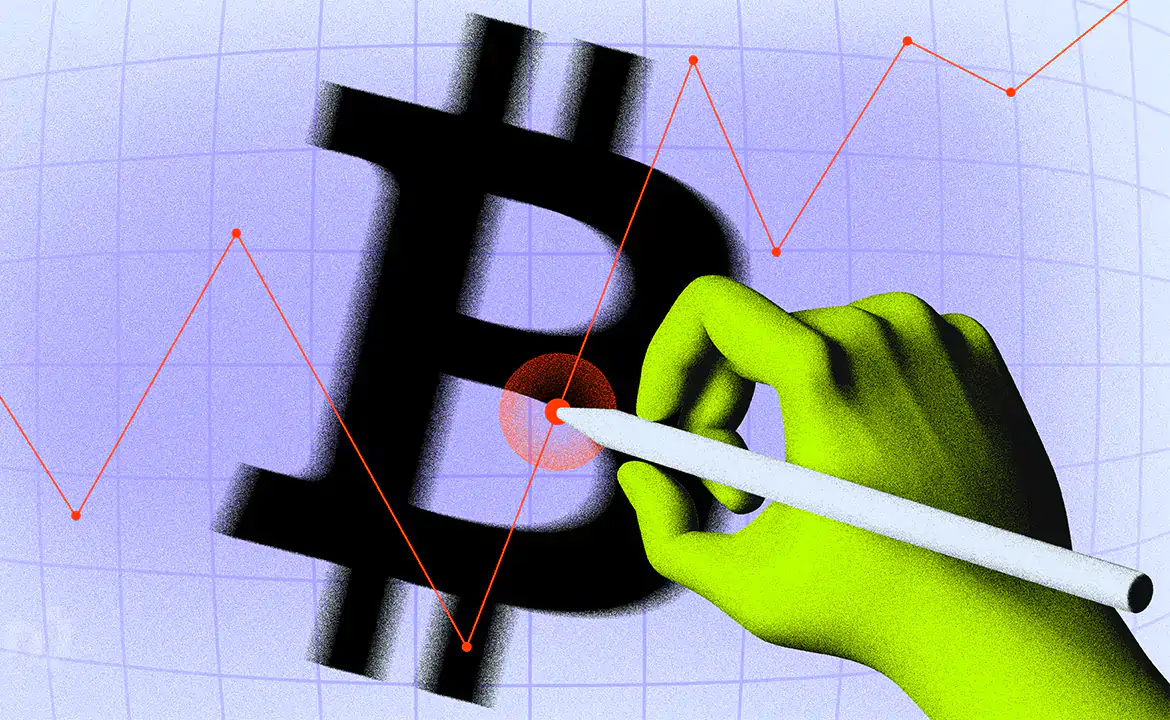The rise and fall of Sam Bankman-Fried is a tale of the way we live now — tweeting, not reading.
No longer a bazillionaire.
Photographer: Ting Shen/Bloomberg
Niall Ferguson
Sam Bankman-Fried doesn’t read books. As he explained in a on Sequoia Capital’s website (which will be an assigned text in journalism courses for the rest of time), “I would never read a book.” “I’m very skeptical of books,” he said. “I don’t want to say no book is ever worth reading, but I actually do believe something pretty close to that.”
This error is not irremediable, because Bankman-Fried, founder of the now-defunct crypto exchange FTX, is likely soon to have a lot of time for reading.
I, by contrast, as the author of many books, am very skeptical of Sam Bankman-Fried. As I on May 1: “There is a great deal of loose talk among the crypto bros.”
How about this from Sam Bankman-Fried, … who was asked to explain the practice of yield-farming on Bloomberg’s “Odd Lots” podcast. Yield farming, to put it simply, is borrowing someone else’s crypto tokens in exchange for your own “governance tokens,” and then exchanging the borrowed tokens for higher-yielding DeFi (decentralized finance) instruments.
Bankman-Fried's explanation
Like this is a valuable box as demonstrated by all the money that people have apparently decided should be in the box. And who are we to say that they’re wrong about that??… And so then, you know, [the governance] token price goes way up. And now it’s a $130 million market cap token because of, you know, the bullishness of people’s usage of the box. And now all of a sudden, of course, the smart money [goes and pours] another $300 million in the box and …?it goes to infinity. And then everyone makes money.
My comment was: “Never mind the Wild West; this is the Wacko West.”
At a conference I attended in late September, Bankman-Fried was one of the speakers in a session devoted to cryptocurrency. I take notes on such occasions. My first observation was that he had “a constant jiggling knee issue, also an f-word issue.” The moderator asked him politely what the point was of cryptocurrency. He replied, unhelpfully: “The industry needs to get its sh** together.” Asked when the “crypto winter” would end, he retorted: “Who the f*** knows?” Among his other responses were that he didn’t “want scams on the exchange” and that a lack of regulatory clarity was “more than half” of the problem.
At the time of the conference, “SBF” was said to be worth a bazillion dollars (I forget the exact figure that was being bandied about). This has gone to “zero dollars and a likely jail term” very rapidly indeed.
The essentials are that as of Nov. 10, FTX had an $8 billion gap between its liquid assets and its liabilities. For a time, it was believed to have been hacked for as much as $477 million. In fact, these remaining assets were transferred to a wallet belonging to the Securities Commission of The Bahamas, where FTX was based.
Crypto traders such as Genesis and Galois Capital have disclosed hundreds of millions of dollars in funds trapped on FTX. They have plenty of company. In short, a lot of people who entrusted their money to SBF are never going to see it again. Maybe they thought their crypto was in a vault. Their crypto is in a crypt.
So, what’s the right analogy? I’ve heard a few this past week: Crypto’s Lehman moment. Crypto’s Long-Term Capital Management moment. Nope. The Federal Reserve intervened in 1998 and 2008 to prevent those collapses from becoming financial crises; the Treasury had to help out in the case of Lehman Bros. Some things really are “too big to fail.” That’s not happening here because neither FTX nor even crypto are all that big.
A better analogy might be the dot-com bust of 1999-2000. But there wasn’t all that much fraud in Web 2.0’s mass-extinction event. More accurate might be crypto’s Enron moment: a bubble plus fraud.
In truth, however, these modern analogies fail to do justice to Bankman-Fried’s rise and fall. To understand what just happened, you really need to go back a century and a half, to Anthony Trollope’s coruscating The Way We Live Now (1875). Inspired partly by the 1866 collapse of Overend, Gurney and Co., the novel describes the ascent and descent of Auguste Melmotte, whom Victorian society hails as a financial genius not because he is one, but because he offers the elite the prospect of easy money.
Today, the easy money seems most likely to come from the internet, if we can only “monetize” it. In the 19th century, the easy money came from another kind of network: railroads. Melmotte floats a company on the stock exchange: the South Central Pacific and Mexican Railway Board, which is supposed to construct a new railway line from Salt Lake City in Utah to Veracruz in Mexico. The railroad is fictitious, but the promised future profits are large enough to attract Lady Matilda Carbury and her bounder son, Sir Felix. Hand in glove with Melmotte is the wonderfully named American tycoon Hamilton K. Fisker.
Melmotte rises to the pinnacle of London society, buys a country estate and becomes a member of Parliament. Of course, the whole thing is a massive scam, which becomes clear when Melmotte forges documents in order to find the cash for the country estate. Everything comes crashing down. Disgraced, Melmotte commits suicide.
The Lady Carburys of today include Orlando Bloom, Tom Brady, Bill Clinton, Katy Perry and all the other celebrities who recently flew to FTX’s Bahamas base; the Miami Heat basketball team, to whom SBF paid $135 million to rename their arena; not forgetting the comedian Larry David, who appeared in a Superbowl commercial for FTX.
But it wasn’t just the celebs. The Ontario Teachers’ Pension Plan and the Singapore sovereign wealth fund Temasek were among the respectable entities that invested with FTX.
Sequoia, one of the biggest names in venture capital, appears to have been completely taken in. In the 19th century, it was very common for journalists to promote stocks. Let’s revisit that Sequoia . SBF, we read, had a “vision about the future of money itself” and might “very well end up creating the dominant all-in-one financial super-app of the future.”
Bankman-Fried was superhuman. He could score 10 out of 10 in a meeting with top venture investors while simultaneously playing the video game League of Legends. He was “as good at explaining the principles of macroeconomics as anyone out there in the world today” — but (unlike, say, Harvard’s Greg Mankiw) SBF could teach macro “while simultaneously playing round after round of Storybook Brawl.” The man was “obviously a genius.” He was “a future trillionaire.”
How to make sense of Bankman-Fried’s spectacular fall from future trillionaire to nothing-there? The New York Times some touching insights. Yes, SBF had lost “most of his fortune” but he was “surprisingly calm,” sleeping reasonably well, still playing Storybook Brawl during interviews. Had FTX improperly used billions of dollars of customer funds to prop up his hedge fund Alameda Research? He could “offer only limited details.” He just wished he had “bitten off a lot less.”
Still not sure what really happened? Let’s try SBF’s social media. “I f***ed up, and should have done better,” he tweeted on Nov. 10. But relax. “THIS IS ALL ABOUT FTX INTERNATIONAL, THE NON-US EXCHANGE. FTX US USERS ARE FINE!” (Cut away to dog-in-burning-house
He continued: “FTX International currently has a total market value of assets/collateral higher than client deposits (moves with prices!). But that’s different from liquidity for delivery.” SBF was shocked, shocked to learn that some FTX users were using margin credit to speculate in crypto tokens and that a run on his exchange was possible. “Because, of course, when it rains, it pours.” No kidding!
Last Tuesday, he offered more illumination. “As of post-11/7 … a) Alameda had more assets than liabilities M2M [marked to market] (but not liquid!) b) Alameda had margin position on FTX Intl.” The Wall Street Journal translation:. “Behind the scenes, FTX was using billions of dollars of customer money to fund risky trades by Alameda Research.”
FTX was also spending actual dollars in the manner usually associated with drunken sailors: $1.1 billion on acquisitions from October 2021 through March 2022, plus $153 million on sales and marketing, and $122 million committed on real estate.
We financial historians have seen this movie before — many times. To encourage SBF to try reading books when he has some more time on his hands, here’s what I wrote on the subject in my 2008 book The Ascent of Money
In the four hundred years since shares were first bought and sold, there has been a succession of financial bubbles. Time and again, share prices have soared to unsustainable heights only to crash downwards again. Time and again, this process has been accompanied by skullduggery, as unscrupulous insiders have sought to profit at the expense of naive neophytes. So familiar is this pattern that it is possible to distil it into five stages:
- Displacement: Some change in economic circumstances creates new and profitable opportunities for certain companies.
- Euphoria or overtrading: A feedback process sets in whereby rising expected profits lead to rapid growth in share prices.
- or bubble: The prospect of easy capital gains attracts first-time investors and swindlers eager to mulct them of their money.
- Distress: The insiders discern that expected profits cannot possibly justify the now exorbitant price of the shares and begin to take profits by selling.
- Revulsion or discredit: As share prices fall, the outsiders all stampede for the exits, causing the bubble to burst altogether
The rise and fall of SBF is in many ways a classic case. As my advisory firm, Greenmantle, explained to its clients back in January, Bitcoin — the original cryptocurrency, which was supposedly inflation-proof — was nevertheless bound to decline in price this year. “The main reason,” we wrote, “is that major central banks … are preparing to tighten monetary policy … Since the onset of the pandemic, monetary and fiscal stimulus has been a substantial source of price support for Bitcoin. But this is coming to an end.”
Wrongly, it seems, we saw “below $30,000” as the likely year-end price and gave only a 10% chance Bitcoin would fall below $15,000-$20,000, in the mistaken belief that its widespread adoption as an “option on digital gold” would create a higher floor than its previous crashes. On Friday, it traded at roughly $16,500.
It turned out that the adoption trend had stalled and the effect of rising rates on leveraged players was more important. Among the reckless deals Alameda did this year was a $500 million loan agreement with failed crypto lender Voyager Digital, which filed for bankruptcy protection soon afterward because of its exposure to Three Arrows Capital (3AC), a hedge fund whose investing strategy was going “levered long” on crypto. 3AC’s thesis had been that the world was in a crypto “supercycle” in which token prices would only go up.
However, 3AC was one of the biggest losers from the implosion of the Terra stablecoin and its sister token Luna, losing between $200 million and $500 million in a matter of days. This triggered a credit squeeze across the industry and, as prices plunged and interest rates rose, 3AC faced margin calls it couldn’t meet. Counterparties to 3AC took a hit; Blockchain.com lost $270 million in loans to 3AC. There was a chain reaction that led from 3AC to Voyager to Alameda to FTX.
There is nothing in this story that would surprise the ghost of John Law, the Scottish financier who blew up the Mississippi Bubble in early 18th-century France. Bubbles are nearly always inflated with cheap credit. When monetary conditions tighten, the most leveraged players go down first, but the result is a cascade of illiquidity, which then turns into insolvency as asset prices plunge.
Another classic feature of the FTX story is the role of shady political influence. Just as Law ingratiated himself with the Duke of Orleans, the regent during the minority of Louis XV, so financial fraudsters through the ages have relied on friends in high places to protect them from legal or regulatory scrutiny.
Take Enron, the energy trading company that filed for bankruptcy in December 2001. Ken Lay, its chief executive, could not have inflated his castle in the air without Fed Chair Alan Greenspan’s monetary policy “put,” but Enron also bought itself protection with roughly $6 million of political donations, a third of which went to Republicans. In addition, the company sought to buy itself popularity by paying the Houston Astros to rename their ballpark Enron Field.
Sound familiar? In 2020, Bankman-Fried gave the Joe Biden campaign at least $10 million. In the 2022 midterm election cycle, he was the second-largest funder of Democrats, after George Soros, giving $39.8 million in federal contributions. The majority of those donations, about $27 million, went to the Protect Our Future PAC, which supported candidates who prioritized pandemic prevention.
Not all bubble-blowers present themselves as philosopher kings. Law did; Lay not so much. As the son of two law school professors, SBF was exceptionally well prepared for self-aggrandizement. The Sequoia profile is full of gems:
Q: You just happen to be alive in the most important time in the history of the future race. The existential point! Really?
SBF: It certainly would not be one’s prior — at least, not naively. But if you want to really needle on that, there are some anthropic considerations by which that might not be as crazy as it sounds.
When a young man sets out make billions of dollars very quickly, there is a common suspicion that he is actuated by greed. By raising himdoctrinaire utilitarian, professors Bankman and Fried provided their son with the perfect alibi: He was making the money purely in order to engage in “effective altruism,” the get-rich-quick version of utilitarianism. Because you can only do the greatest good for the greatest number if you first make the greatest amount of money.
Effective altruism also seems to have led SBF and his sometime girlfriend, Caroline Ellison — the chief executive of Alameda — to rationalize the crazy risk-taking they engaged in as investors. In an interview with my Bloomberg Opinion colleague Tyler Cowen, Bankman-Fried came close to agreeing that it would be worth repeatedly playing a game in which there was a 51% chance you could “double the Earth out somewhere else” but a 49% chance of the Earth disappearing.
This was music to the ears of the Democratic donor class. A young man willing to take huge risk in order to make billions — in order to give it all away to solve all the world’s problems — and get Democratic candidates elected in tight congressional races. Will you take a meeting with such a prodigy? Of course you will. If he is lucky, he’ll be the world’s first trillionaire! Never mind about the fact that there’s a 90% chance he blows up.
There are three questions that remain to be answered, each of which distinguishes the case of FTX from other bubbles in history. First, what the heck were the regulators thinking? We read in the Financial Times last week that “The US Securities and Exchange Commission is investigating FTX over its crypto lending activities and management of customer funds.” Wait, the SEC investigates Bankman-Fried only now? As opposed to months ago?
Second, what is the future of crypto exchanges? At one level, SBF’s downfall was the result of a turf war between FTX and the bigger exchange Binance, founded in 2017 by Changpeng Zhao, aka CZ. At one time an investor in FTX, CZ still owned a large amount of FTT, the FTX token. In a Nov. 2 article, the crypto news site CoinDesk revealed the huge amount of generously priced FTT on Alameda’s balance sheet. Four days later CZ announced on Twitter that he was selling roughly $530 million of FTT for “risk management” reasons.
This was not his only motive. “We won’t pretend to make love after divorce,” he . “We won’t support people who lobby against other industry players behind their backs.” This was the declaration of war that sparked the nosedive in the FTT price and the run on FTX.
“A competitor is trying to go after us with false rumors,” Bankman-Fried tweeted on Nov. 7. “FTX is fine. Assets are fine.” (Again, dog-in-burning-house meme.) For a brief moment, Zhao seemed willing to buy his ailing competitor. But then he sent a Signal message to SBF and his team. “Sam, I’m sorry,” he wrote, “but we won’t be able to continue this deal. Way too many issues. CZ.” Bankman-Fried told his team that BINANCE “probably … never really planned to go through with the deal.”
Any student of 19th century financial history will recognize the dynamic. It was how the joint-stock banks and railroads fought their wars for market dominance. However, in the case of crypto, there is a puzzle. Why do these exchanges even exist? The original theory of the case, dating back to the original white paper on Bitcoin by its pseudonymous creator, Satoshi Nakamoto, was that cryptocurrency would permit peer-to-peer payments without the need for third-party intermediation. All transactions would be logged, unalterable, on the blockchain.
Purist proponents of decentralized finance, such as my Hoover Institution colleague Manny Rincon-Cruz, have long argued that the exchanges are an aberration — an unwelcome intrusion into the world of DeFi from the world of TradFi (traditional finance). Sure, exchanges offered convenience, especially to speculative day traders looking for quick returns. But they also offered opacity. To an effective altruist looking to make billions in a hurry, transparency was an obstacle, which explains why SBF lobbied to “kill DeFi” through the Digital Commodities Consumer Protection Act of 2022.
I was never a user of FTX, preferring a more reputable US-based exchange for my experimental forays into Cryptoland. However, as soon as the crypto bubble began to deflate — the proverbial canary in the coal mine was the collapse of Terra’s $15 billion UST stablecoin — I withdrew the lot and stored it on a LEDGER hardware wallet. Those who continued to trust FTX have learned the hard way the truth of the early crypto maxim “not your keys, not your coins.”
Having spent some anxious hours refreshing my memory about Ledger, Uniswap and MetaMask, I would say that DeFi is currently about as user-friendly as personal computer software in the pre-Windows era. So long as that remains true, crypto exchanges will have a role. It’s possible that, as happened with Web 2.0, a single exchange will become the dominant player, centralizing what was supposed to be a decentralized network, just as Amazon centralized e-commerce, Google centralized search, Facebook centralized social networking, and Twitter centralized outrage. But my guess is that the attempt to rename crypto Web 3.0 was based on a flawed analogy. The stakes are just too high when financial services — as opposed to personal data — are being traded online.
Finally, if exchanges are not necessarily the future, what will remain of cryptocurrency? To those, like my friend Nouriel Roubini, who have long predicted the collapse of the “sh**coins,” 2022 has been a good year. Readers of his new book, Megathreats, will relish his demolition of crypto as a giant Ponzi scheme dreamt up by “scammers and carnival-barkers” to fleece naive retail investors suffering from internet-induced FOMO. A great many crypto coins and tokens will indeed go to zero — indeed, many already have. Yet I am still not convinced that the experiment with blockchain-based finance will end up being a total failure.
If Roubini had been around in the 1720s, he likely would have said the last rites for stocks with equal fervor. But the bursting of the Mississippi and South Sea Bubbles did not mark the end of equity financing and stock trading, any more than the many financial panics of the 19th century marked the end of joint-stock banking.
On the contrary, both stock markets and banks went on to play a crucial role in financing the later phases of the Industrial Revolution. As Antonio Garcia Martinez put it, “Innovation starts in mad genius and grift and bubbles, and ends in establishment institutions. ... Every Web titan you see about you — Square, Stripe, Twitter, Facebook, Airbnb, Uber — all launched or massively scaled after another such … panic. … And then what followed was the biggest tech boom of a generation.”
Will the current crypto winter be succeeded by a DeFi boom? Or will it be like the weather in C.S. Lewis’s Narnia: always winter, never Christmas? Financial history is on Martinez’s side more than Roubini’s.
And that’s another reason why Sam Bankman-Fried should read books. I suggest starting with The Ascent of Money
More From Bloomberg Opinion:
- Elizabeth Holmes’s Humiliation Is Part of Her Punishment: Stephen L. Carter
- Hammers More Nails Into Crypto’s Coffin: Lionel Laurent
- The Fed Hasn’t Its Worst Blunder Since the 1970s: Niall Ferguson
Want more Bloomberg Opinion? Terminal readers head to OPIN
This column does not necessarily reflect the opinion of the editorial board or Bloomberg LP and its owners.
To contact the author of this story:
Niall Ferguson[email protected]
To contact the editor responsible for this story:
Tobin Harshaw[email protected]



 BlocksInform
BlocksInform










